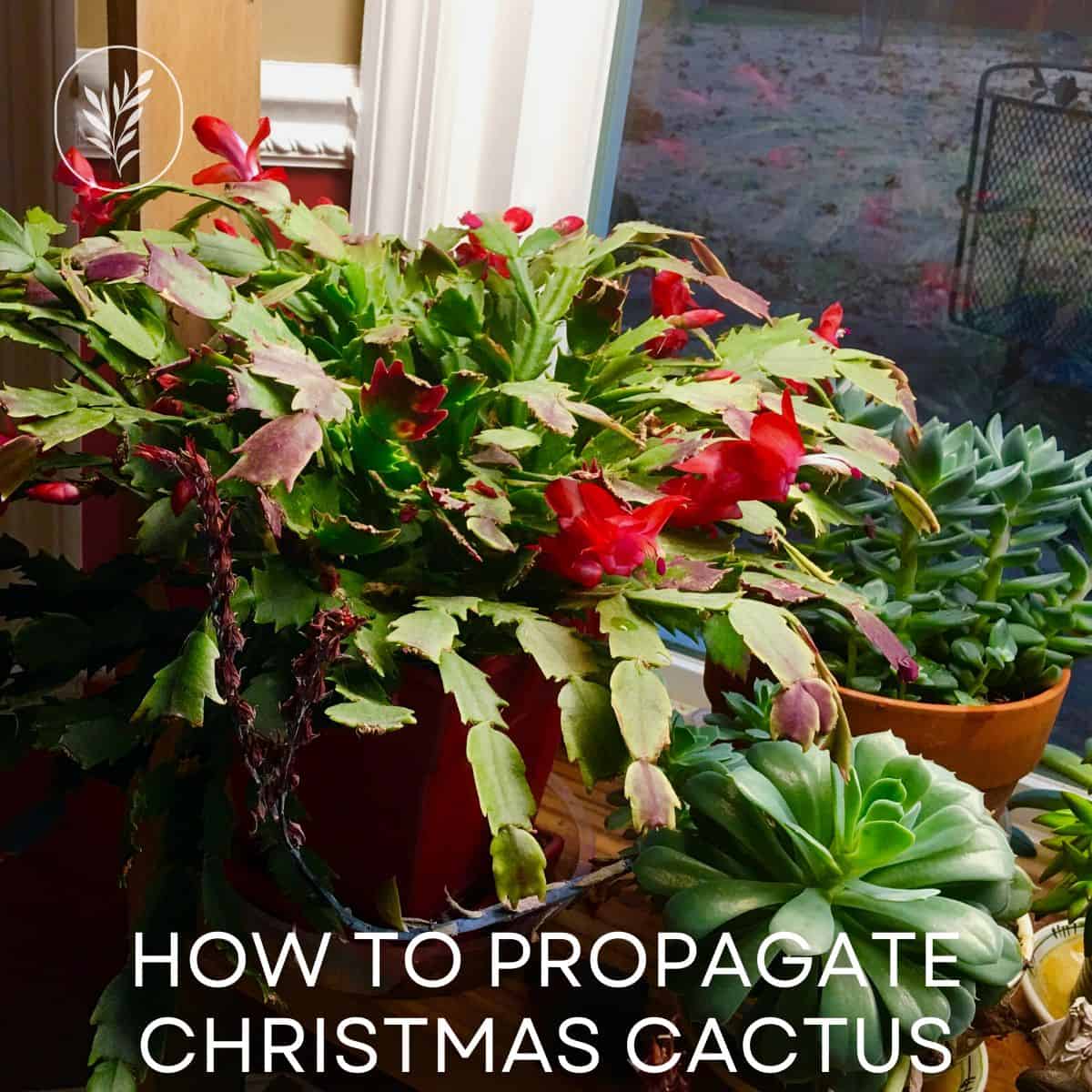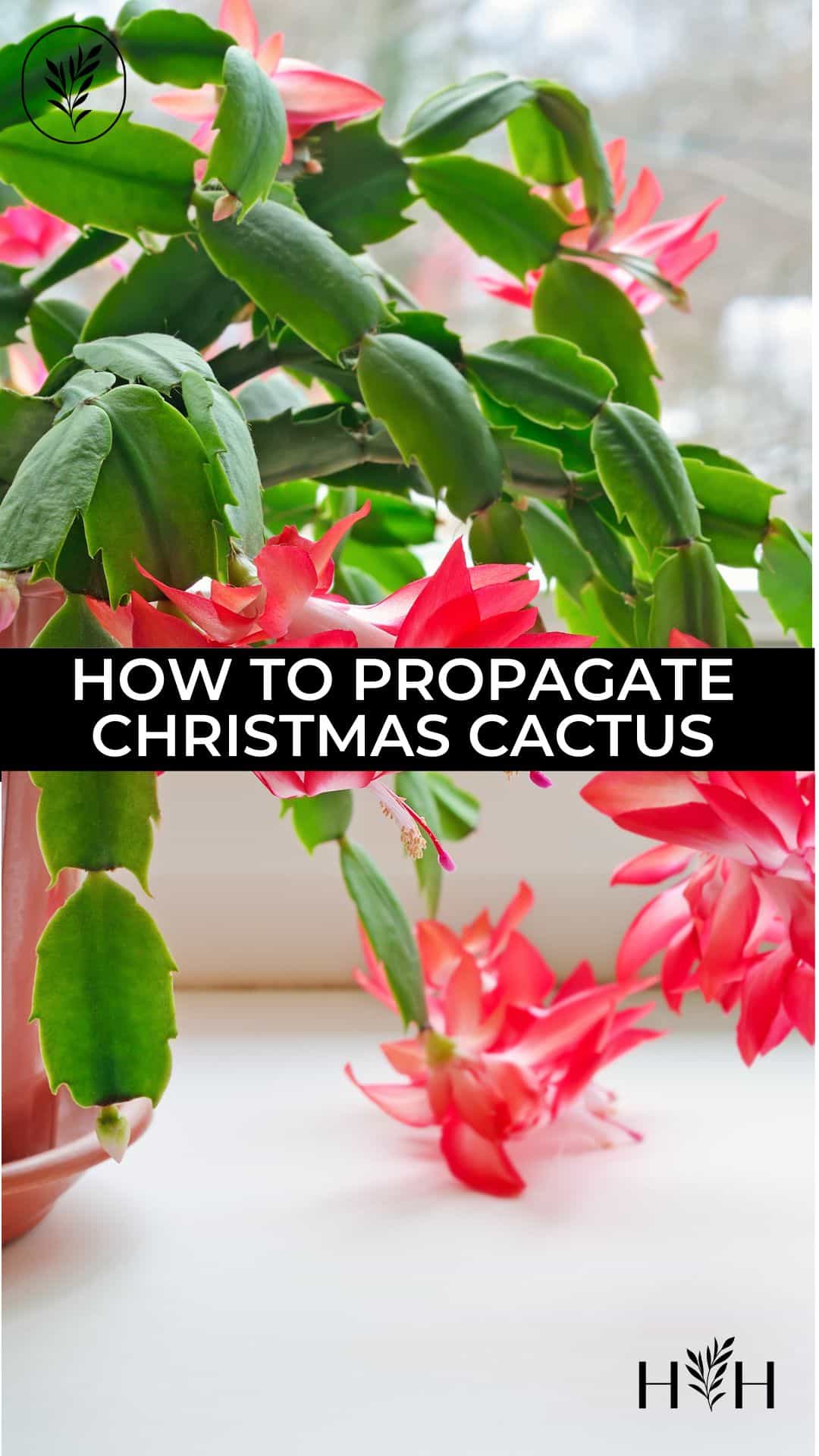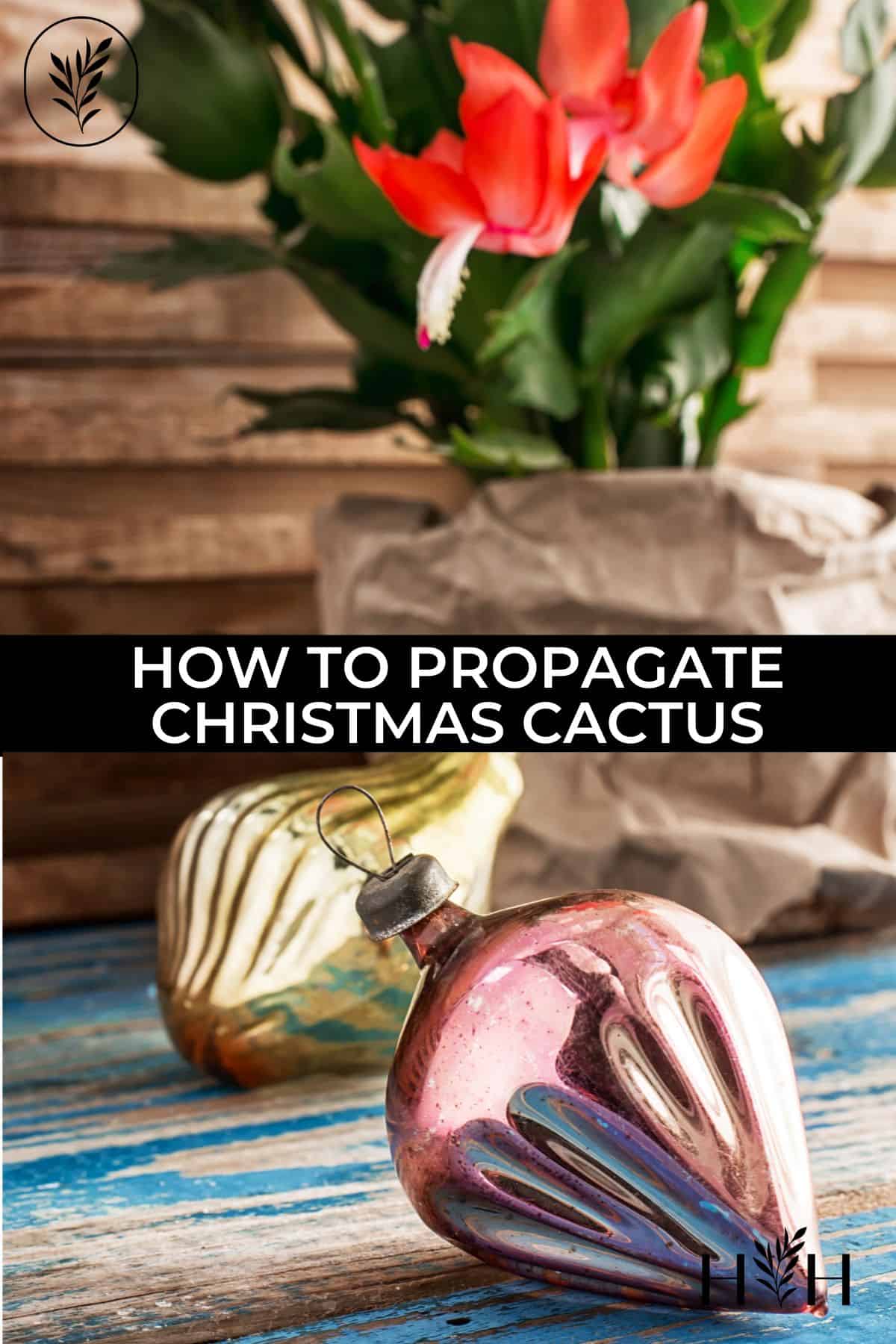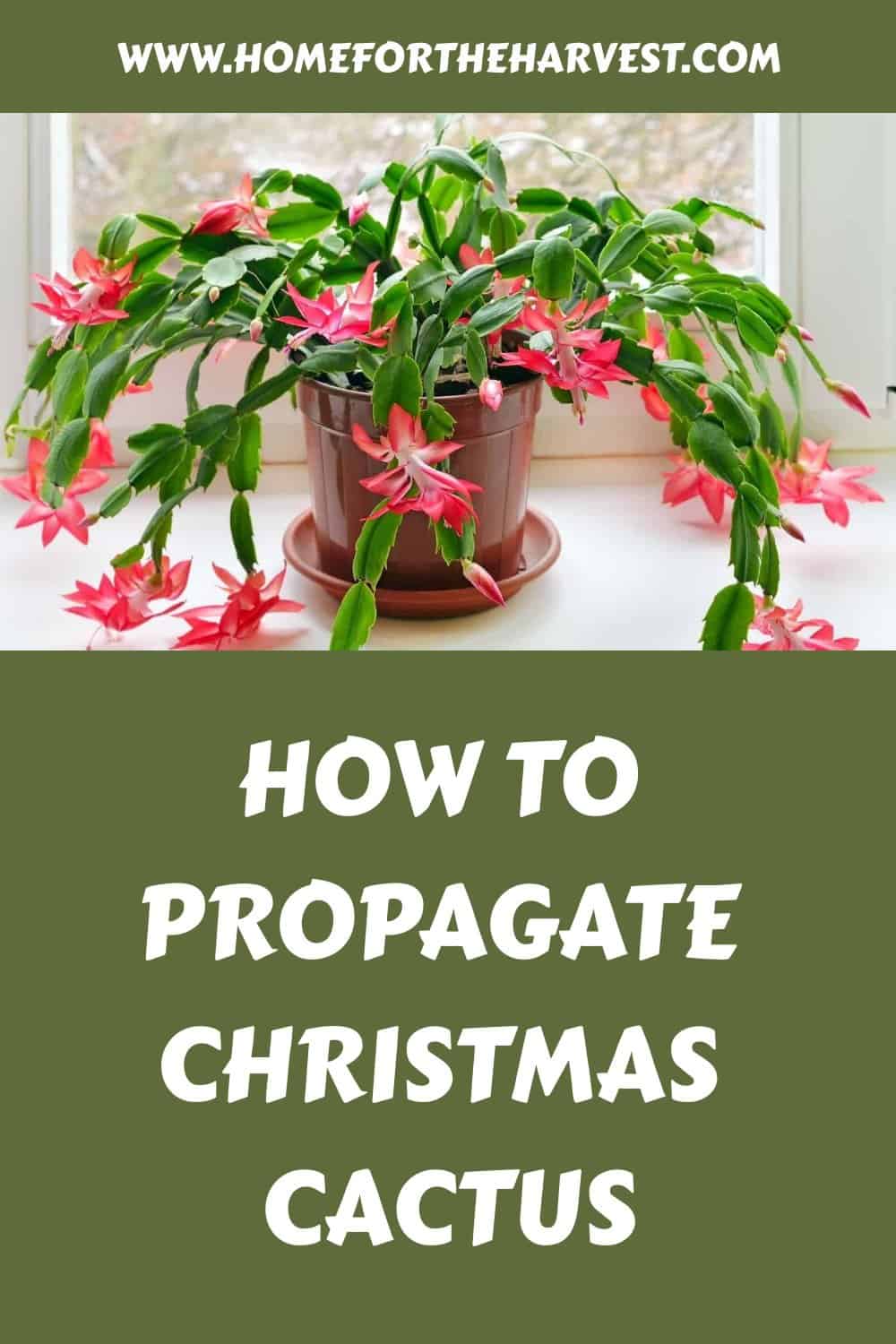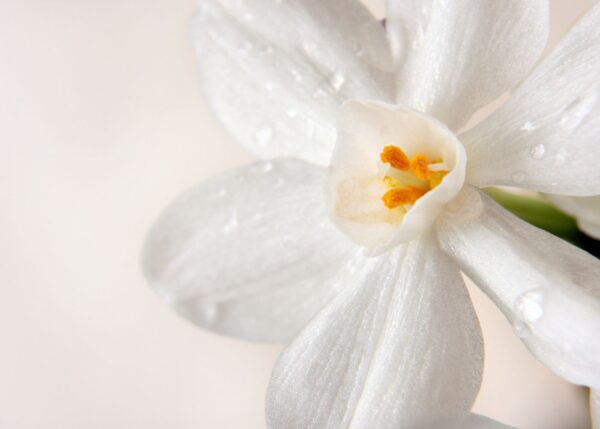As the name suggests, Christmas cactus is a popular houseplant that blooms right around the holidays. Beginner gardeners love Christmas cactus because they’re easy to grow, maintain, and propagate. This article will cover the basic methods of propagating Christmas cactus so that you can learn how to do it yourself!
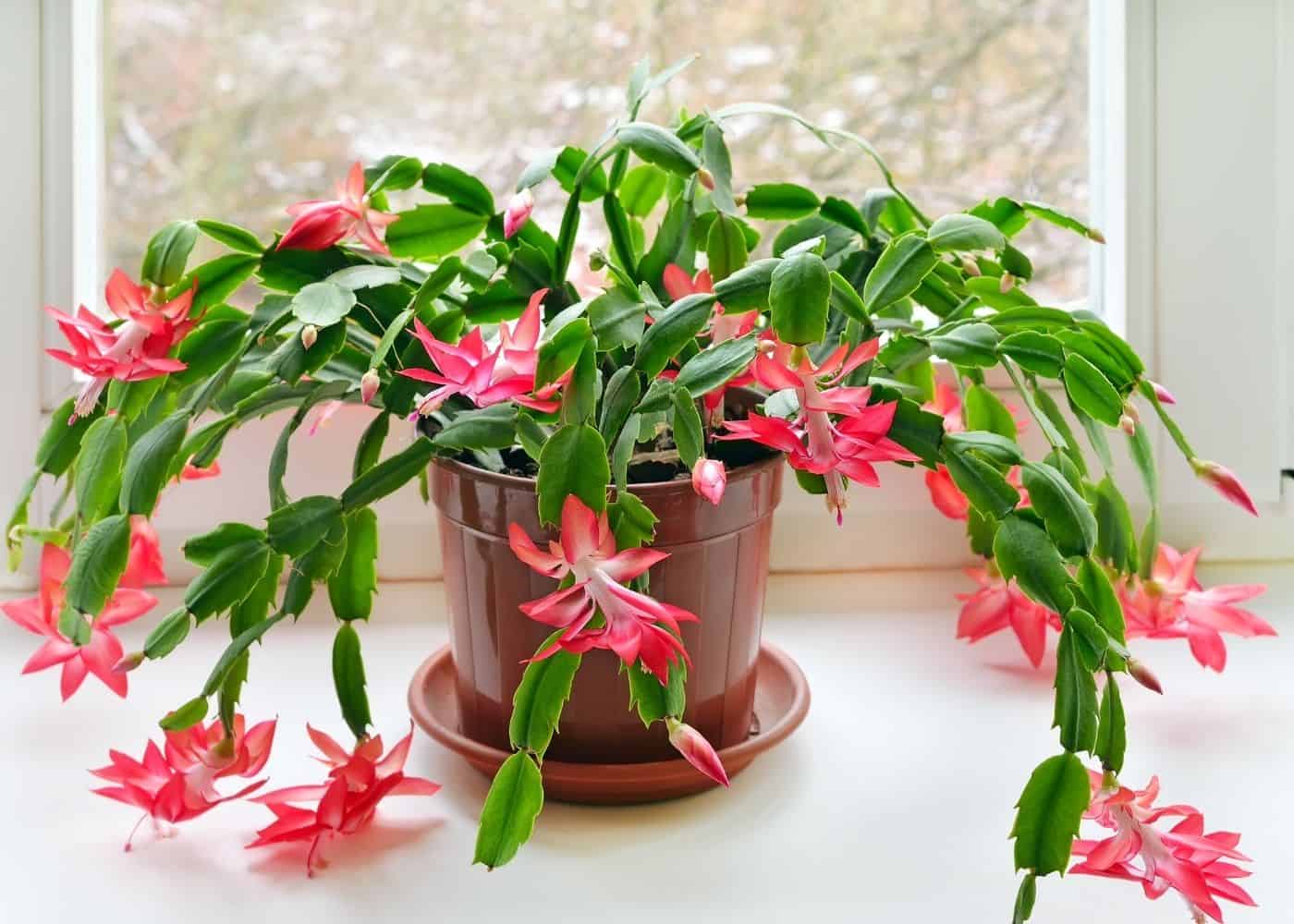
Christmas cactus propagation basics
Propagating Christmas cactus is extremely easy. However, try to do your propagating after your cactus has already bloomed if possible. If you propagate before your cactus blooms, you may end up cutting off some of the blooms, and your mother cactus won’t flower as beautifully. Plants that are propagated in the spring also tend to grow more vigorously and establish more quickly than plants propagated in the fall or winter.
Methods for propagating Christmas cactus plants
Christmas Cactus plants are commonly propagated by cuttings or by root division:
1. Cuttings
Propagating with cuttings involves taking a few leaves from the tip of a few segments and rooting them in either soil or water. Unlike other plants that have regular leaves or stems, Christmas Cactus has a line of thick, succulent-like leaves attached to one another. A “cutting” is when you take a few of the leaves from the tip of the main segment and use this for propagating a new plant.
2. Root division
Propagating with root division involves dividing the plant from the roots and planting the sections in the soil to develop new roots. Root division is the easiest method of propagation for succulents.
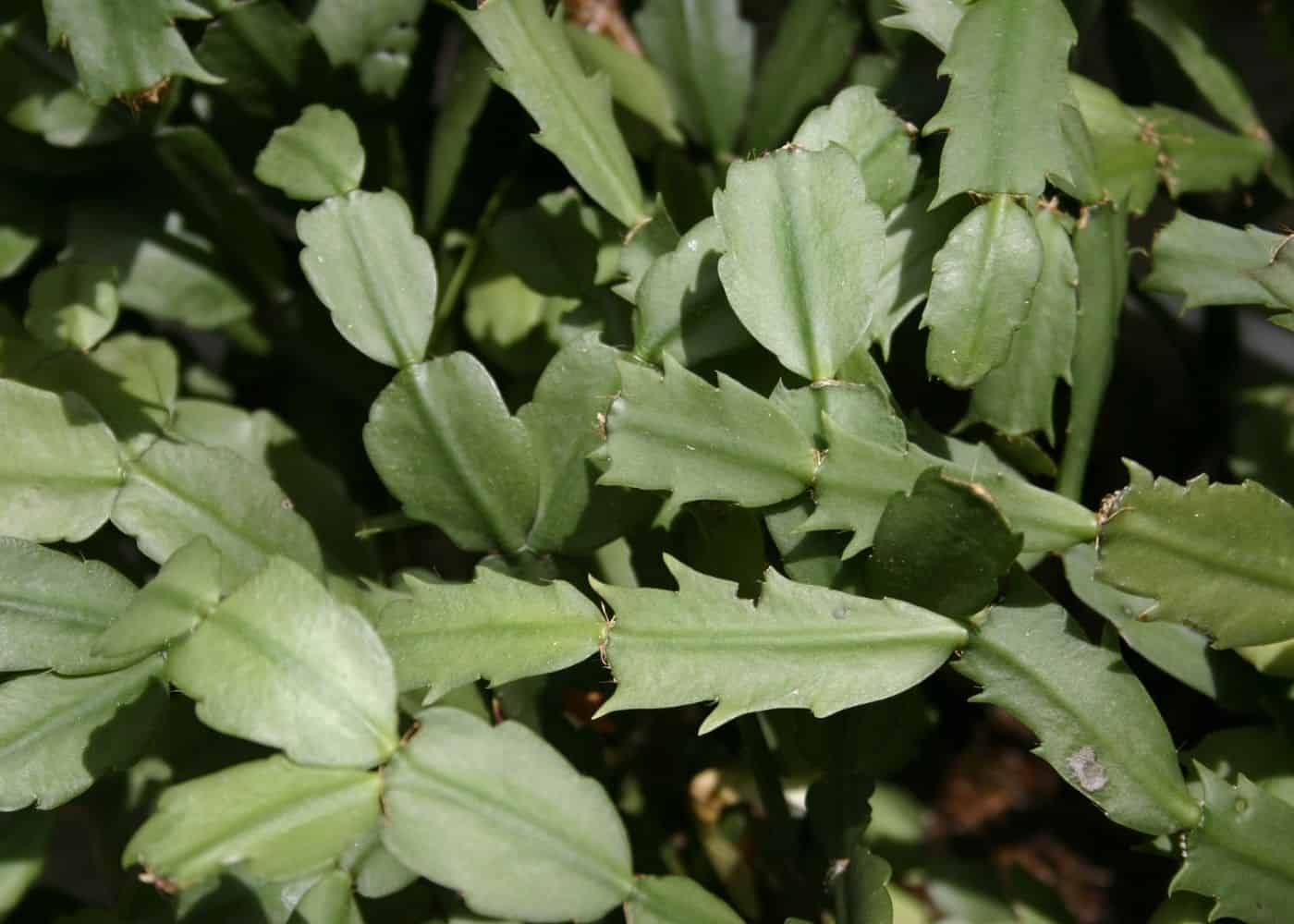
Propagating Christmas cactus from cuttings
Christmas Cactus plants are easy to propagate from cuttings. Once the cutting has been taken, it can be set into water or into potting soil to grow roots. Here are the instructions for rooting Christmas Cactus cuttings with both methods:
1. Propagating Christmas cactus in water
According to the University of Wisconsin-Madison, you should have roots in about 2-3 weeks after starting propagation.
To properly propagate Christmas Cactus in water, you need some supplies:
- Sharp pruning shears or a good pair of scissors
- Sanitizing solution (often dilute alcohol or bleach)
- Rooting hormone powder
- Clean container with fresh water
Here are the steps for propagating Christmas Cactus cuttings in water:
- Disinfect your scissors using a sanitizing solution Disinfecting your scissors prevents bacteria and other debris from contaminating the fresh-cut stems.
- Pick the segments you want to cut off your plant. Make sure these segments are young with healthy leaves as these are optimal for propagation. Each cutting should have 2-6 leaves. Choose 3-5 cuttings per the number of planters you have.
- Then, cut off or twist in between the last segment you’re taking and the segment still attached to the mother plant. Make sure each cutting has a portion of the main Christmas Cactus so that the plant will propagate correctly. Place your cuttings on a clean surface. Repeat until you have enough cuttings.
- Trim the base of each segment. Make a clean cut so that the base of the segment remains healthy and well-suited to root development. Cuttings can be as small as 2-3 inches long and still produce roots.
- Dip the cut end of each segment into rooting hormone powder. This is optional; however, it can be helpful if you’re new to propagating houseplants.
- Place the segments into a clean container filled with fresh water. Place each segment in its container or group a few in larger containers. Make sure the cuttings are not crowded and the air circulation is good. (The easiest way to monitor root development is through clear glass containers to see the Christmas Cactus cuttings.
- Move the cuttings to a location with bright indirect light that is not too close to the cuttings to avoid foliage burn.
- Monitor the cuttings every few days, changing the water and looking for root development. Remove any yellow or mushy cuttings and plant the healthy cuttings into planters once they have emerging roots.
- Put the rooted cuttings into groups and place them into a planter with cactus potting soil. Water the cuttings, making sure the water drains freely.
2. Propagating Christmas cactus in soil
Here are the key materials needed to properly propagate Christmas Cactus in the soil:
- Sharp pruning shears or a good pair of scissors
- Dilute solution of alcohol or bleach
- Hormone Powder
- Planter pot with moist potting mix
Here are the steps for propagating Christmas Cactus cuttings in potting soil:
- Repeat steps 1-5 from above and then continue with the steps below once you have your cuttings.
- Fill the bottom 1/3 of a planter pot with cactus potting mix. Make sure your pot is at least 4-6 inches wide and has good drainage holes at the bottom. Succulent or cactus potting mix combined with sand or grit works well for propagating Christmas Cactus.
- Place several cuttings into the planter pot. Usually, about three cuttings fit into a 4-inch wide planter, while five cuttings suit a 6-inch wide planter. The base of each cutting should be resting on the bed of potting mix.
- Fill the rest of the planter with potting mix. Fill the remaining space surrounding the Christmas Cactus cuttings, leaving around an inch of space at the top. Then, water the planter, making sure the water is draining well out of the bottom. Keep in mind the soil may settle after watering, but this is entirely normal.
- Move the planter to a location with bright indirect light that is not too close to the cuttings to avoid foliage burn.
- Monitor the plant every few days, watering before the soil becomes too dry. Christmas Cactus cuttings grow best in slightly moist, not soggy or muddy soil.
Propagating Christmas cactus by root division
Larger Christmas Cactus plants are easy to propagate by dividing up the roots into smaller sections. Here are the basic steps to propagate a Christmas Cactus by root division:
- Remove the plant from the pot by gently grabbing the base of the plant and pulling it out. If you can’t easily pull out the plant, use a butter knife to cut around the edges of the pot to loosen the soil.
- Dust the dirt off the roots to see where you should cut. If you can’t untangle the roots, you can cut them.
- Take a clean, sharp knife and divide the root ball of the mother plant into sections. Make sure each section you cut has roots attached, or it will be tough for the sections to develop roots.
- Replant the sections into small pots with cactus or succulent potting mix. Replant the mother plant into a small pot as well. Water thoroughly.
Resources
Here are some other festive plants you may want to grow for the holidays:
- Christmas Plants: 20+ Festive Houseplants For The Holidays
- Rosemary Christmas Tree Plant Care Tips & Ideas
- Paperwhites For Christmas: Growing White Holiday Blooms
- 14 Christmas Herbs & Holiday Seasonal Spices For A Fragrant Festive Season


